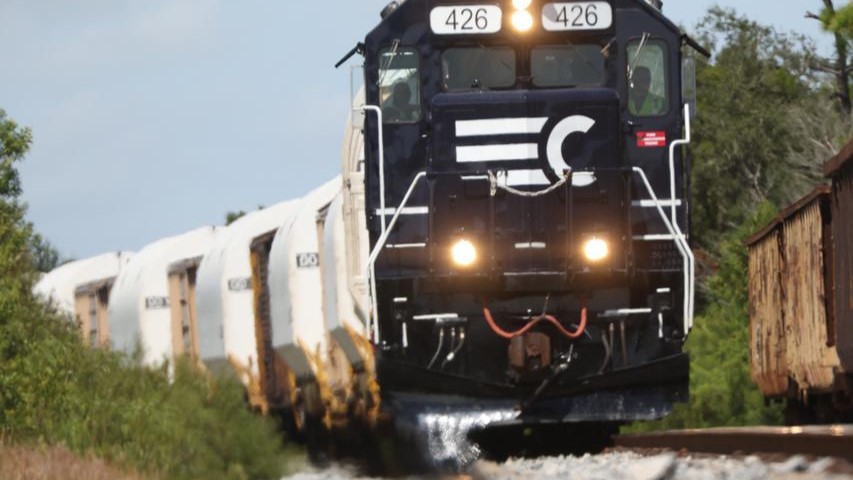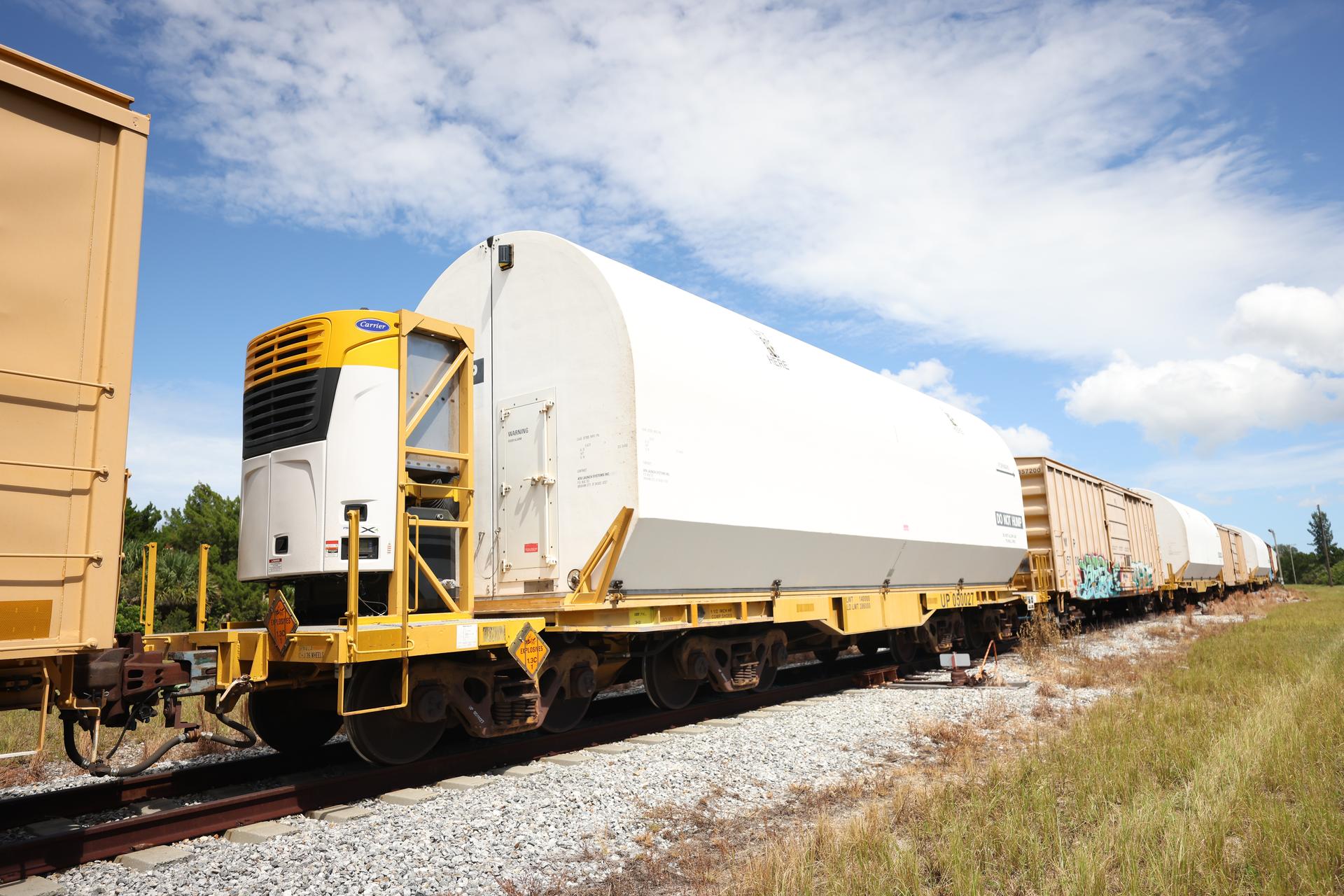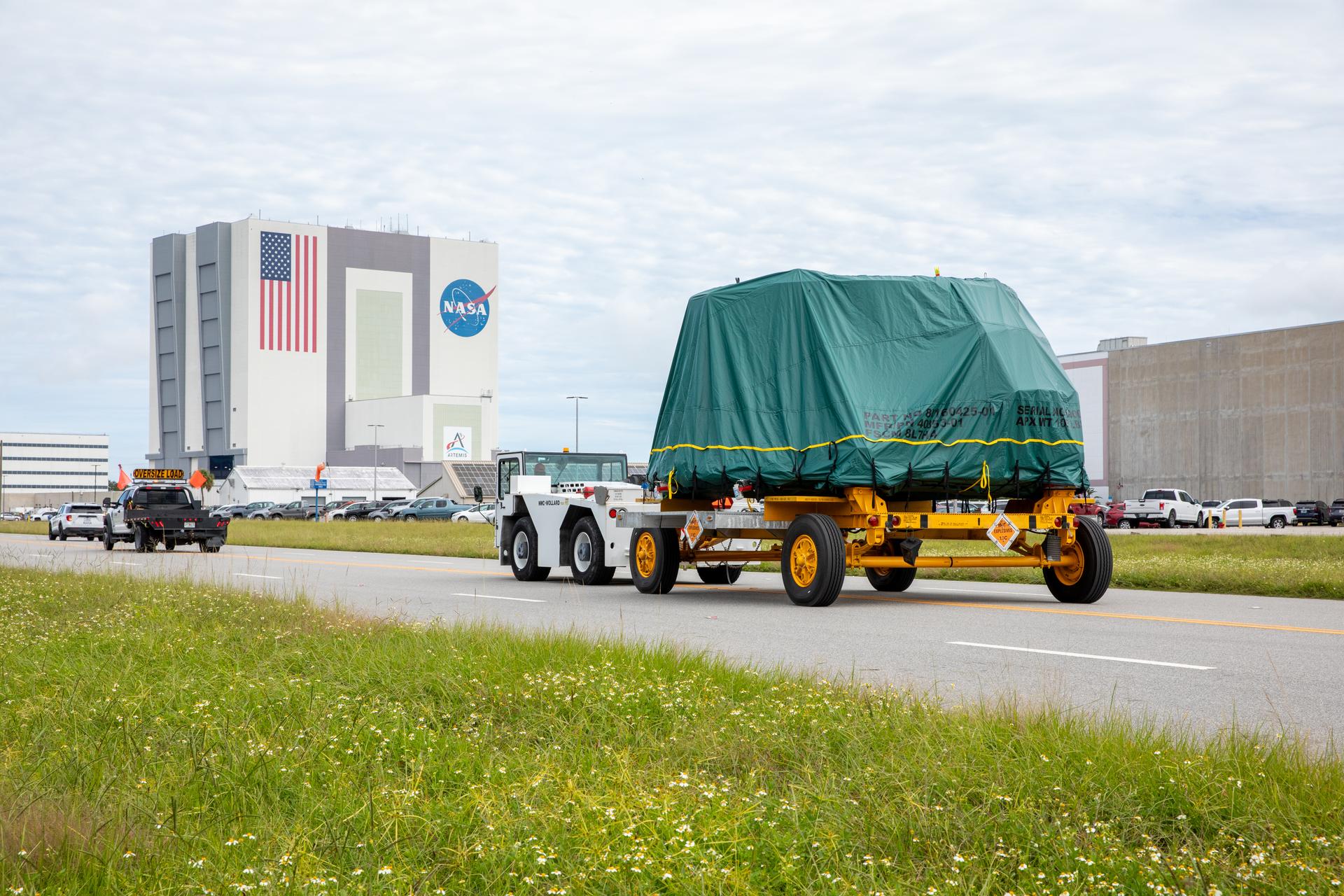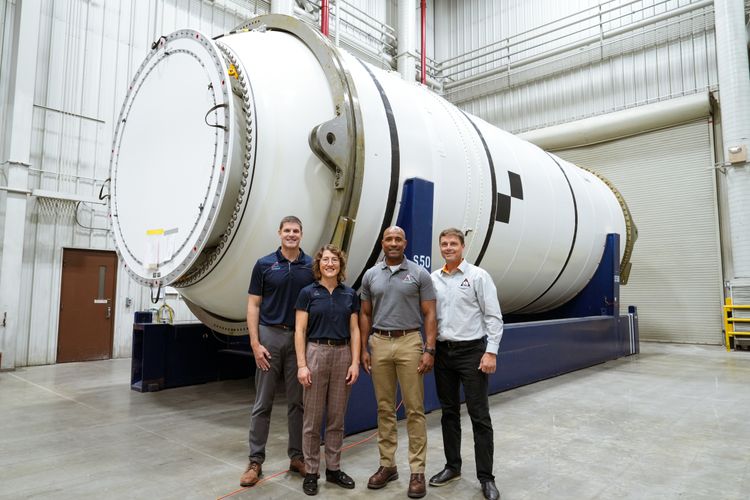All aboard! Train tugs Artemis 2 moon rocket parts to the NASA launch center (photos, video)
'Right on track,' NASA said after the rocket booster segments arrived.

Rocket pieces for the first human moon mission in 50 years glided into their launch center via rail.
NASA's massive rocket booster segments, too large to ship by other means, safely arrived at a Florida railyard for a "turning point" in launching Artemis 2 and four astronauts around the moon late next year, agency officials stated on Sept. 25. The boosters will support the agency's powerful Space Launch System rocket during the moon mission's launch in 2024.
The SLS, the most powerful rocket ever built, will nevertheless require help from twin solid rocket boosters built by Northrop Grumman to launch the Artemis 2 crew into space. Each of these fully assembled and fueled boosters weighs 1.6 million pounds (720,000 kg), which NASA officials have said is the equivalent mass of four blue whales.
"Right on track!" NASA officials enthused in a post on X (formerly Twitter) announcing the safe arrival of the boosters, which took several days to cross eight states between Utah and Florida. (Trainspotters reported sightings en route starting Sept. 21, suggesting the trip took four days or so.)
Related: Watch fiery separation of NASA's Artemis 1 moon rocket boosters
The roughly 300,000-pound (136,000-kg) pieces arrived from Promontory, Utah (north of Salt Lake City) at a rail yard in Titusville, not far from NASA's Kennedy Space Center. They were hauled by locomotive Florida East Coast Railway (FEC) 426 on Train 421, amateur trainspotters said on RailPictures.net and on platforms such as YouTube.
Each of the 10 pieces is so tall that it's impossible to get them under standard freeway bridges, said Mark Ferguson, forward assembly subsystems manager for boosters, in a KSC interview streamed on Facebook on Wednesday (Oct. 4.)
Get the Space.com Newsletter
Breaking space news, the latest updates on rocket launches, skywatching events and more!
The two-story segments range in height from 26 to 33 feet or roughly 8 to 10 meters, depending on where they are used on the rocket. A standard interstate highway clearance is only 16 feet or 5 meters, the Department of Transportation states.
"We just couldn't handle it over the road. The train does it, though," Ferguson said. "We can bring them across eight states. We can go through all the tunnels — everything. We have a clear path on that. So that's why we use the train."

FEC owns a 351-mile or 565-km track stretching from Jacksonville (near Georgia, in the north) through to Miami near the state's southern tip. The rail has several state connections to other lines, according to FEC's website. As for the booster shipment, it pulled in at main line interchange Jay Jay in Titusville near KSC's 38-mile (61-km) industrial short line, trainspotters said.
The boosters then made their way to KSC via NASA's fleet of mobile car movers (made by rail technology company Shuttlewagon). The Shuttlewagons used to tug booster parts from the space shuttle program along the same KSC tracks.
In fact, these Artemis 2 pieces already made the KSC track journey themselves during the shuttle program. That's because each piece is recycled from the old missions; the Artemis program SLS boosters are also based on the design of the old shuttle boosters (but using five segments, instead of four, for extra power.)
Related: NASA's Artemis 1 mission to launch using space shuttle-used parts

Artemis 2's booster pieces are now being prepared at KSC's Rotation, Processing and Surge Facility (RPSF). The covers were expected to be removed shortly, booster officials said on Oct. 4, for critical inspections to make sure the pieces survived the journey.
"The technicians actually crawl into the center of the propellant — the bore — and do inspections, looking for deficiencies or cracks," booster flow manager Heather Gillette said in the same Facebook livestream.

"Once they're done with that, they go take the two facility overhead cranes — 200 ton cranes," she continued. Using the cranes "on either side of the (booster) segment," she said, "they rotate it (the segment) from horizontal to vertical, and they move it over to our buildup stands."
The two buildup stands will serve as scaffolding for each of the aft assemblies, which steer the twin boosters in flight. The stands will allow technicians to piece together the flame-emitting rocket nozzle, align with the aft segments and aft skirts, Gillette said. (The aft skirts were already at KSC, having been shipped by a small vehicle from the center's Booster Fabrication Facility.)
The remaining booster pieces will be stored at RPSF until the aft assemblies are ready. Then everything will be brought from RPSF into KSC's iconic Vehicle Assembly Building for stacking for the big launch day.
Join our Space Forums to keep talking space on the latest missions, night sky and more! And if you have a news tip, correction or comment, let us know at: community@space.com.

Elizabeth Howell (she/her), Ph.D., was a staff writer in the spaceflight channel between 2022 and 2024 specializing in Canadian space news. She was contributing writer for Space.com for 10 years from 2012 to 2024. Elizabeth's reporting includes multiple exclusives with the White House, leading world coverage about a lost-and-found space tomato on the International Space Station, witnessing five human spaceflight launches on two continents, flying parabolic, working inside a spacesuit, and participating in a simulated Mars mission. Her latest book, "Why Am I Taller?" (ECW Press, 2022) is co-written with astronaut Dave Williams.









